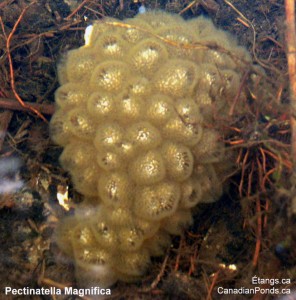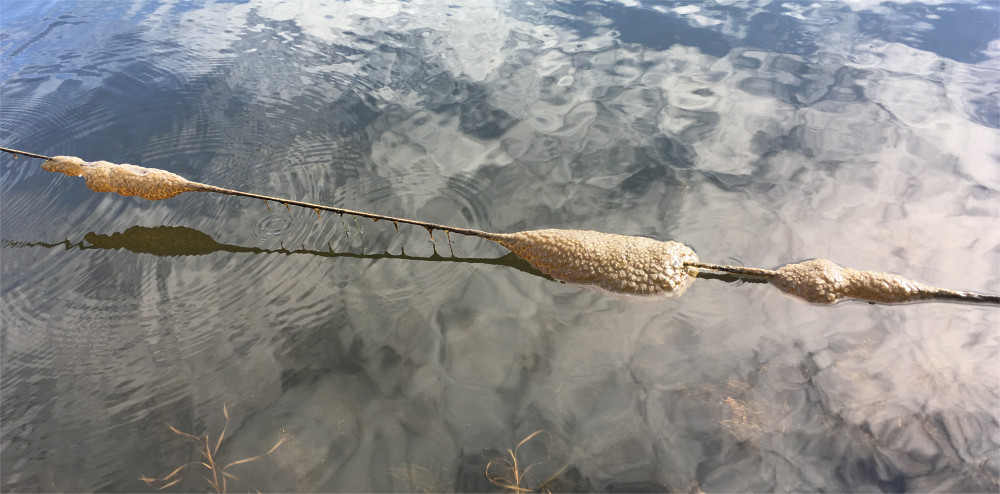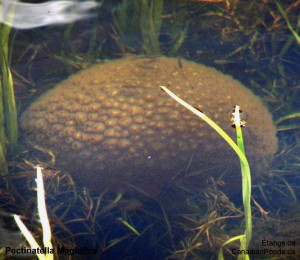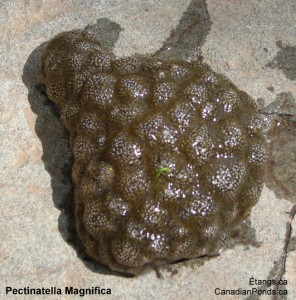Pectinatella Magnifica: Do You Know Her?
 Found a big brown – maybe disgusting – ball at the bottom of your pond? No, it’s not an alien from outer space.
Found a big brown – maybe disgusting – ball at the bottom of your pond? No, it’s not an alien from outer space.
It is in fact a living colony of invertebrates, sometimes made up of millions of individuals, which fluctuate from year to year. The colonies can vary in size (from one millimeter to one meter or more in diameter). These animals secrete a hardened, see-through jelly to which they hold on tightly.
Commonly called “Moss Animals” and “Magnificent Bryozoan”, it was first observed in Philadelphia in 1851. It is common in North America, Europe, Japan and Korea. The presence of Pectinatella Magnifica was confirmed in quite a few lakes in the Eastern Townships of Quebec.
It usually appears in nutrient rich and warm waters (20 degrees Celsius or more) in August and September, anchored to submerged objects. The gelatinous mass generally stays in suspension in the water and can rise up to the surface as it grows in size.

 The ideal location for the Pectinatella is in shallow bay with a wide littoral, a gentle slope exposed to sunlight, or lakes with fertilizer run offs and rivers with little or no current.
The ideal location for the Pectinatella is in shallow bay with a wide littoral, a gentle slope exposed to sunlight, or lakes with fertilizer run offs and rivers with little or no current.
These bryozoan reproduce in autumn by releasing “statoblasts” (these resemble eggs or spores made out of brown powder) that hang on to animals such as migrating birds, dogs or other mammals. Thus, the proliferation between water bodies is generally made by way of air (migrating birds) or water runoff. The statoblasts will survive winter by “hibernating” and shall proliferate the next season.
The colony disintegrates as the water cools down (under 16 degrees Celsius), which frees the statoblasts.
These animals are a clear sign of good water quality rich in nutrients. They consume the same thing as algae and aquatic plants. They can be a sign of over-fertilization.
They can be a sign of over-fertilization.
As a defense mechanism against fish or predators, the Pectinatella emit a pestilential smell.
They exist in many shapes and colors. The three smaller pictures are from a pond in the Eastern Townships and were taken near the end of July.
